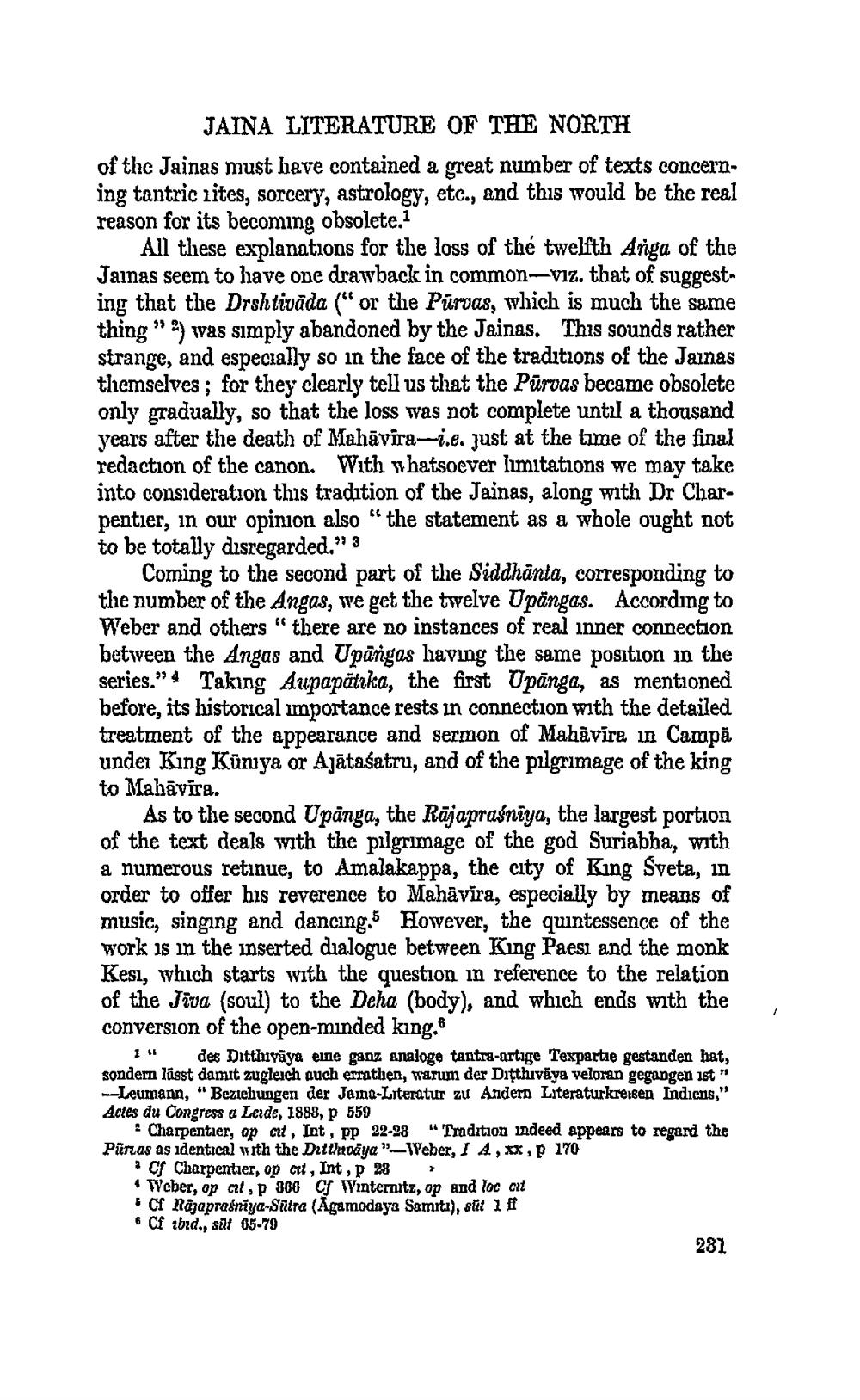________________ JAINA LITERATURE OF THE NORTH of the Jainas must have contained a great number of texts concerning tantric rites, sorcery, astrology, etc., and this would be the real reason for its becoming obsolete. All these explanations for the loss of the twelfth Anga of the Jainas seem to have one drawback in common-viz. that of suggesting that the Drshtivada (" or the Purvas, which is much the same thing" was simply abandoned by the Jainas. This sounds rather strange, and especially so in the face of the traditions of the Jainas themselves; for they clearly tell us that the Puruas became obsolete only gradually, so that the loss was not complete until a thousand years after the death of Mahavira-.e. just at the time of the final redaction of the canon. With whatsoever limitations we may take into consideration this tradition of the Jainas, along with Dr Charpentier, in our opinion also " the statement as a whole ought not to be totally disregarded." 3 Coming to the second part of the Siddhanta, corresponding to the number of the Angas, we get the twelve Upangas. According to Weber and others "there are no instances of real inner connection between the Angas and Upangas having the same position in the series." 4 Taking Aupapatika, the first Upanga, as mentioned before, its historical importance rests in connection with the detailed treatment of the appearance and sermon of Mahavira in Campa under King Kuniya or Ajatasatru, and of the pilgrimage of the king to Mahavira. As to the second Upanga, the Rajaprasniya, the largest portion of the text deals with the pilgrimage of the god Suriabha, with a numerous retinue, to Amalakappa, the city of King Syeta, in order to offer his reverence to Mahavira, especially by means of music, singing and dancing. However, the quintessence of the work is in the inserted dialogue between King Paesi and the monk Kesi, which starts with the question in reference to the relation of the Java (soul) to the Deha (body), and which ends with the conversion of the open-minded king. 1 des Dittluvaya eme ganz analoge tantra-artige Texpartie gestanden hat, sondern lisst damit zugleich auch errathen, warum der Dicthivays veloran gegangen ist " -Leumann, "Beziehungen der Jauna-Literatur zu Andern Literaturkreisen Indiens," Actes du Congress 2 Lede, 1888, p 550 Charpentier, op art, Int , PP 22-28 "Tradition indeed appears to zegard the Pitas as identical with the Ditthcaja " Veber, 1 A, XX, 170 Cf Charpentier, op at, Int , p 28 * Weber, op al, p 800 T Winternitz, op and loc cut 6 C najapratniya-Saira (Agamodaya Samiti), stul 1 it & CT d., sat 05-79 281




